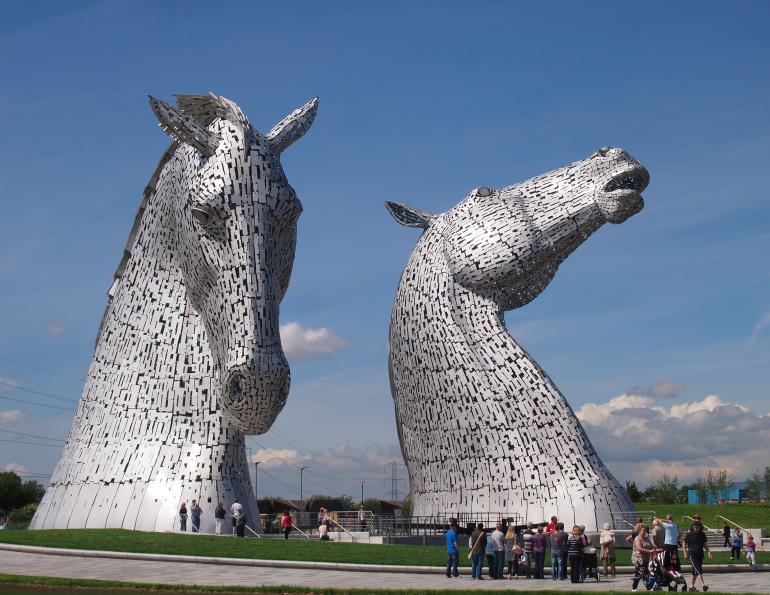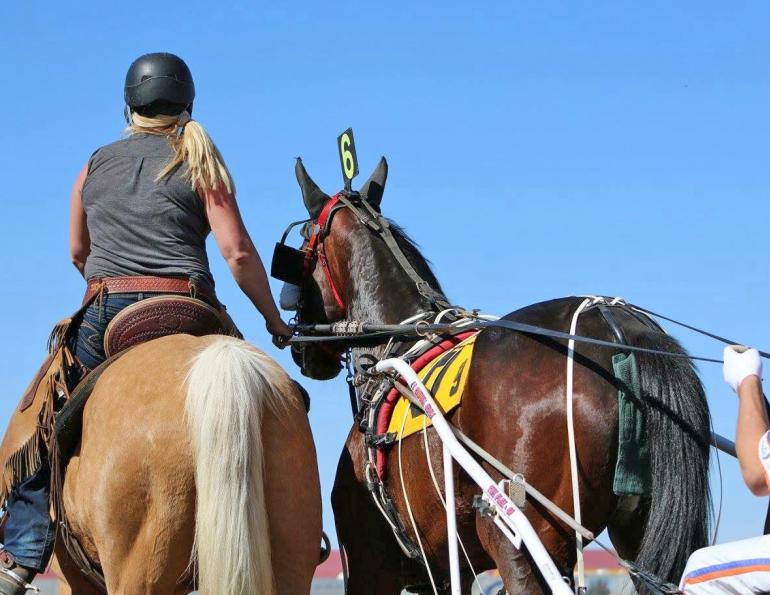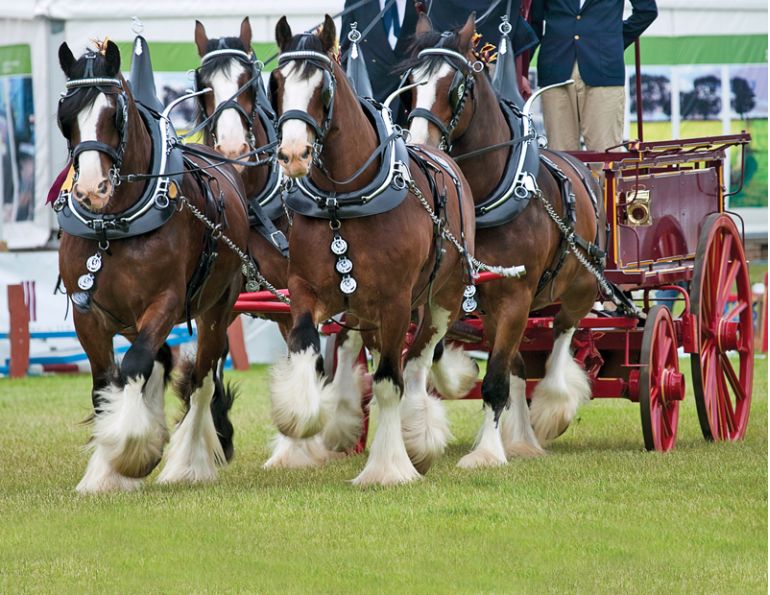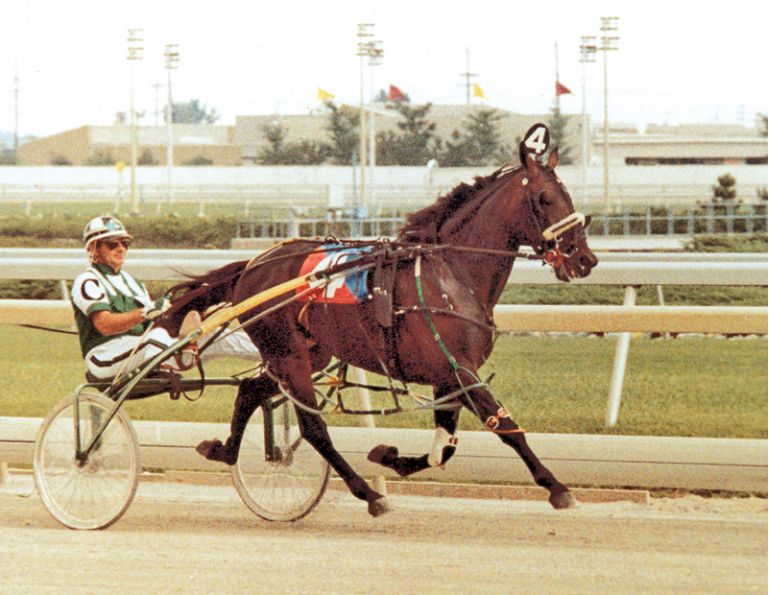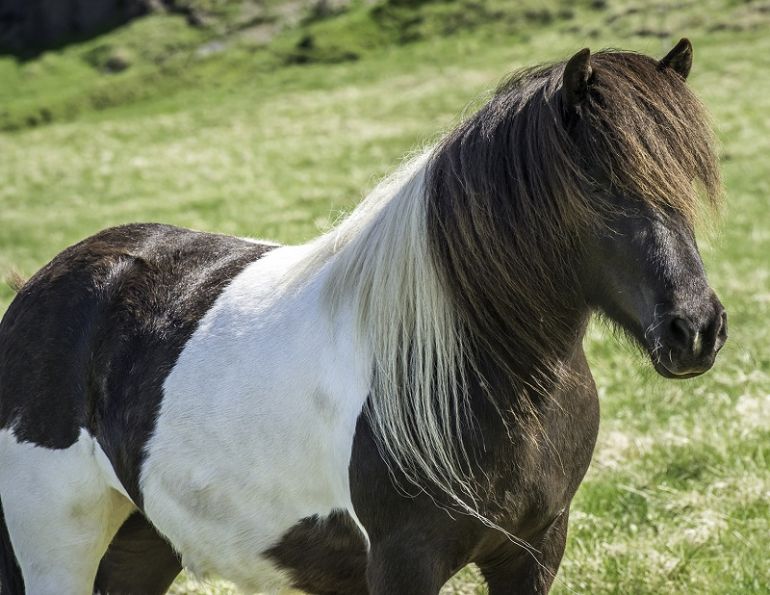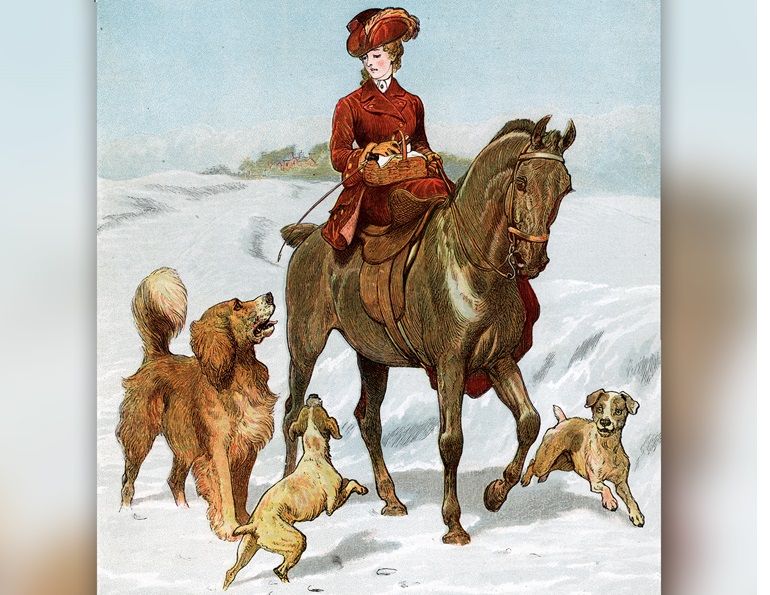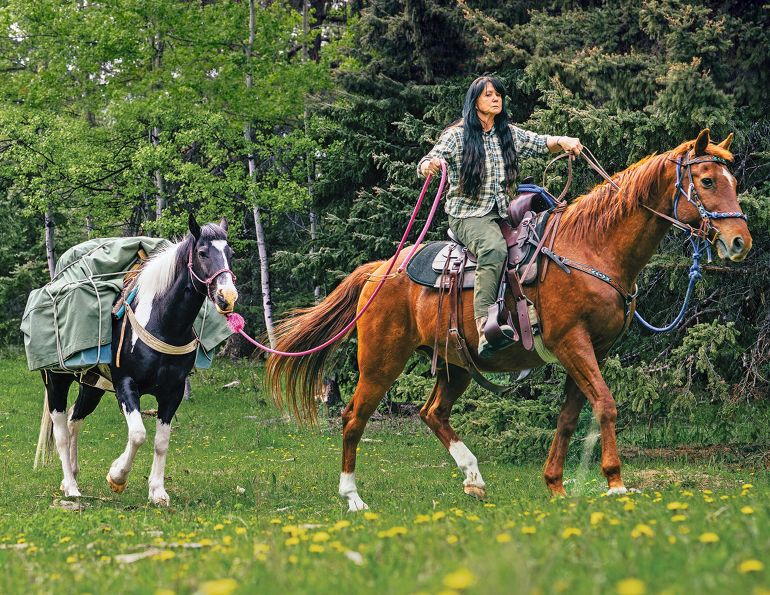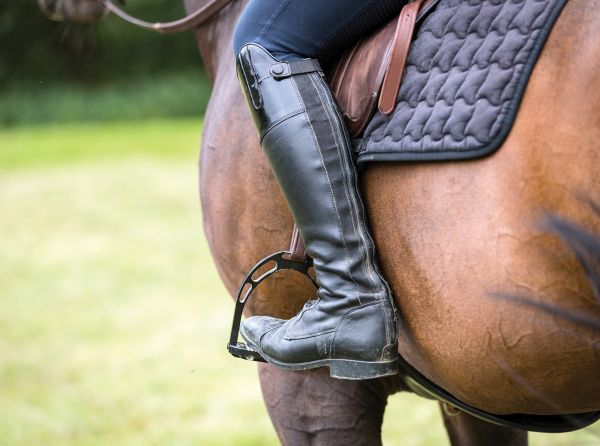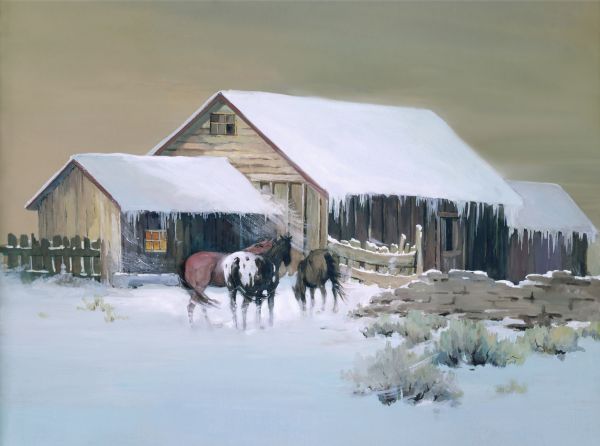By Margaret Evans
Beware the wild beauty of the streams and rivers of Scotland. In those deep, dark pools and foaming eddies lie the mythical water horses, the shape-shifting legendary spirits called the Kelpies.
Sometimes they are black; sometimes white. In Aberdeenshire, the Kelpie is portrayed with a mane of serpents. Many have their hooves reversed compared to an ordinary horse. Some sing. Some look like friendly ponies. Some can change form, taking the shape of a person. All have the strength and endurance of 10 normal horses.
But do not be lured by the beauty and immense power of these mythical, transforming beasts. For they are malevolent, preying on and devouring any human they encounter. Those friendly ponies luring children to ride on their backs have magical, sticky hides. Once mounted, children can never dismount and disappear into the murky waters, never to be seen again.
Folk tales of the legendary water horses have abounded for centuries. The name “Kelpie” may have come from the Gaelic word “cailpeach” or “colpach,” meaning heifer or colt. The legends are thought to have served the practical purpose of keeping children away from dangerous rushing waters, or warning adolescent girls to be wary of attractive strangers. And maybe the stories arose from the long-ago time when horse sacrifices were practiced in ancient Scandinavia. In historical times, when superstition was at the centre of many pagan cultures, demons and water spirits were a possible way of rationalizing the drowning of young children who had accidentally slipped on dangerous riverbanks.
Today, though, the Kelpies are celebrated in sheer modern-age beauty. Between Falkirk and Grangemouth stand the largest equine sculptures in the world. More than statues to honour the mythical Kelpies, they are monuments to honour the horse-powered heritage of Scotland, notably the Clydesdale. The monuments stand 30.48 metres (100 feet) tall and weigh over 272 tons. They are built of structural steel with a stainless-steel cladding. Sculptor Andy Scott modelled the head and neck images on two Clydesdales named Duke and Baron. The horses and their steel images represent everything about the heritage of the heavy horse in Scotland’s industry and commerce.

Each sculpture weighs 300 tons and is clad in 990 stainless-steel plates on a steel skeleton. Photo: Shutterstock/Rachael Arnott
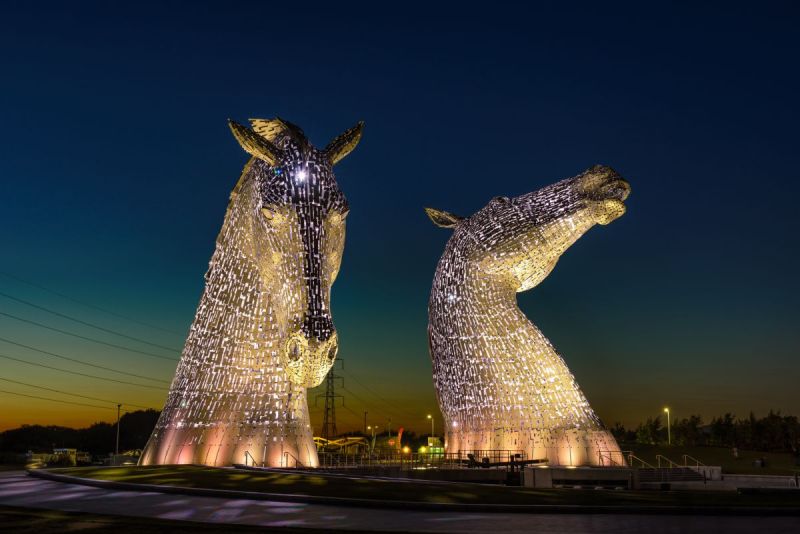
The Kelpies horse statues lit up at night at the Helix Park in Falkirk, Scotland. Photo: Shutterstock/Nick Fox
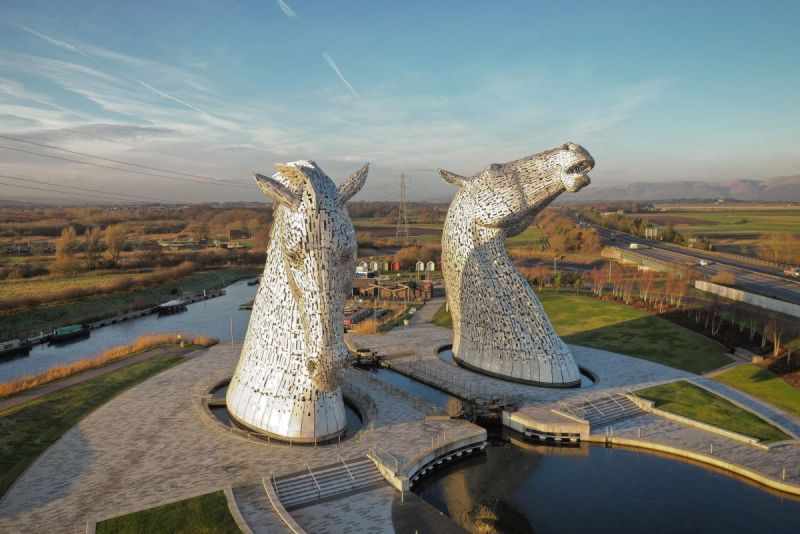
The sculptures form a gateway to the eastern entrance to the Forth and Clyde canal, and the new extension that reconnects the canal with the River Forth. Photo: Shutterstock/Peter D Kent
According to Scott, the original concept of the mythical water horses was a valid starting point for the artistic development of the structures. But he moved that concept more toward an equine contemporary image as a sociohistorical monument to celebrate the horse’s role in industry and agriculture, as well as the horse’s obvious association with the canals as tow horses.
At the end of the 1700s, trees were being harvested for supports for the coal mines, and hardwood was needed to make creels and tool handles for the coal miners, as well as the wooden rails used by pit ponies for hauling coal. Local wood supplied the textile factories, bobbins, and shuttles being made from birch. And wood was in high demand not only for products, but to make the carts needed to haul goods to market, all of which were pulled by horses. Horses were at the heart of everything that would build Scotland’s economy.
An additional inspiration for Scott was that one of the world’s largest Clydesdale horses, Carnera, who stood almost 20 hands high and pulled a delivery wagon in the 1930s, once resided in Falkirk.
The two head-and-neck sculptures stand at the eastern entrance to the Forth and Clyde canal, and the new canal extension built as part of the Helix project and the Helix Community Park.
The extension reconnects the Forth and Clyde canal with the River Forth to improve navigation between east and west Scotland. Creating the monumental statues and naming them The Kelpies represent the transformational change and endurance, like the mythical horses, of Scotland’s inland waterways.
Construction of The Kelpies began in June 2013, and the steel structures were fabricated in North Yorkshire by SH Structures. When the two structural steel frameworks were erected, they were each clad in 990 uniquely shaped stainless-steel plates. Construction was completed in October 2013, when the park was opened to the public. It is now a world-class, go-to destination for tourists. In the first year alone, nearly a million tourists visited the Kelpies. Every year, many more have been transfixed by the size, beauty, engineering feat, and legendary story of the magical water horses.
Main photo: Wikimedia/Rosstheamazing



